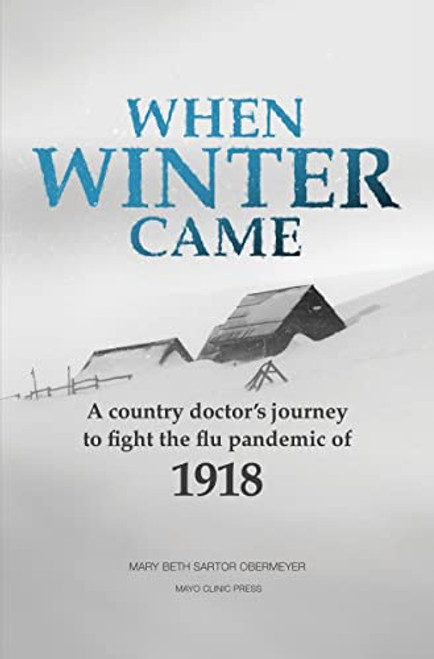Maintain isolation practice good hygiene wear a mask be kind. We all know these methods of fighting COVID-19, but this prescription comes from the 1918 experience of Dr. Pierre Sartor, who battled the worldwide influenza pandemic in his small town of Titonka, Iowa. Dr. Sartor wrote an inspiring first-person account of how he treated more than 1,000 patients and by his reckoning, lost only five which lay forgotten in a lockbox of family artifacts until it was discovered decades later by his granddaughter, Beth Obermeyer, a journalist and author of three previous books. Beth knew her grandfather through her teenage years and grew up absorbing family stories. Based upon Dr. Sartors memoir and her years of research, she vividly reconstructs his life from childhood in Luxembourg, where he overcame a debilitating hearing problem, to medical school in Chicago, courtship and marriage. A pioneer in the geographic as well as the medical sense, Dr. Sartor left his flourishing urban practice and settled his young family in rural Iowa where, he said, I am needed. Those words took on special resonance when Dr. Sartor moved to another Iowa town in the early months of 1918, amid the gathering storm of the influenza pandemic. He had barely settled into the community of Titonka, when, as he wrote, the disease spread like wildfire on wild prairie land. Dr. Sartor traveled for hours and miles to serve his patients, but he did not go alone. His steady, reliable companion was Guido Sartor, his son, who drove a horse-drawn sleigh as well as the familys Model T Ford so Dr. Sartor could reach his patients. Twelve years old at the time, Guido, in his knickers and mask, was an able assistant on many trips including one February day when he drove through a blizzard a searing journey whose denouement would occur more than 30 years later. In the meantime, Guido, inspired by his father, became a physician. The author is Guidos daughter. Growing up in a medical family, Beth writes with insight and candor of the strain that well-intentioned caregivers can place upon the people they love most. Humor was a saving grace for Dr. Sartor. Beth takes us along when young Guido gets their car stuck fast in mud and when, Pierre, exhausted, was roused from bed by a ringing telephone. He answered all the patients questions but then could not forbear asking, Why, why do you always call me at night? Whereupon the patient helpfully explained, But, doctor, youre so busy during the day! Why was Dr. Sartor successful so accomplished, in fact, that he was named General Practitioner of the Year by the Iowa State Medical Society? Among many factors, Dr. Sartor established a close collaboration with Mayo Clinic, about 130 miles away, starting a decade before the pandemic and continuing throughout his career. Referring patients and sharing best practices, Dr. Sartor personifies the respectful relationships that Mayo establishes with community-based physicians throughout the country. Beths story is rooted in a certain time and place. Yet it speaks across generations to the qualities that make a compassionate, skilled physician a compelling example of doing the best of things in the worst of times. Because, when winter comes, we all want a doctor like Pierre Sartor.
When Winter Came: A country doctor's journey to fight the flu pandemic of 1918
MSRP:
Was:
Now:
$17.86 - $31.04
(You save
)
(No reviews yet)
Write a Review

Write a Review

When Winter Came: A country doctor's journey to fight the flu pandemic of 1918
- SKU:
- UPC:
- 9781945564154
- Maximum Purchase:
- 2 units
- Binding:
- Paperback
- Publication Date:
- 1/17/2023
- Release Date:
- 1/17/2023
- Author:
- Sartor Obermeyer, Mary Beth
- Language:
- English: Published; English: Original Language; English
- Pages:
- 352

Touchstone
Flu: The Story Of The Great Influenza Pandemic of 1918 and the Search for the Virus that Caused It
MSRP:
Was:
Now:
$10.02 - $19.81

Metropolitan Books
Lifelines: A Doctor's Journey in the Fight for Public Health
MSRP:
Was:
Now:
$11.80 - $21.89

When the Butterflies Came
MSRP:
Was:
Now:
$11.70 - $39.28

Cambridge University Press
America's Forgotten Pandemic: The Influenza of 1918
MSRP:
Was:
Now:
$13.09 - $32.80

When the Robbers Came to Cardamom Town
MSRP:
Was:
Now:
$17.83 - $124.66
!




